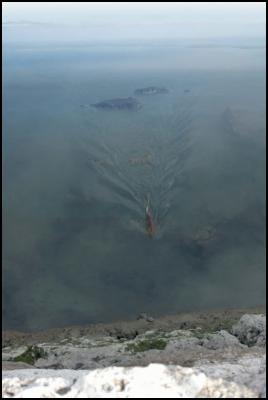Rodent Gives Conservationists Slip for Four Months
Thursday, 20 October 2005, 1:01 pm
Press Release: Auckland University
Rat swims for freedom
Media Release
20 October 2005
Elusive Rodent Gives Conservationists Slip for Four Months
A single rat has given conservationists plenty to ponder after evading capture on New Zealand's remote Noises Islands for four entire months. The elusive rodent avoided a diverse array of traps before finally being caught nearly half a kilometre away on a neighboring island 18 weeks after its release.
The rat was released as part of joint experiment between University of Auckland PhD student James Russell and the Department of Conservation. The experiment shows how difficult it is to keep small islands, which in some cases act as sanctuaries for native birdlife, free of destructive rodents.
An article on the experiment will soon be published in leading international science journal Nature.
Professor Mick Clout, from the Faculty of Science’s School of Biological Sciences, supervised the project. He says the experiment was conducted to test the standard methods for rat detection and elimination.
“Rodents have a very destructive impact on island ecosystems, which is of particular concern in New Zealand given that many islands are set aside as wildlife sanctuaries. Whilst rats can be eradicated from islands, there is always a risk of reinvasion,” says Professor Clout.
Advertisement - scroll to continue reading
“We wanted to test how difficult it would be to catch a single rodent using the standard methods of elimination for higher density populations.”
The male rat was released on the uninhabited island of Motuhoropapa in the Noises, which have been reinvaded by Norway rats six times between 1981 and 2002. They have been rodent free since that time.
It was fitted with a radio-tracking collar and monitored for four weeks. All attempts to detect or capture the rat thereafter failed despite deploying a comprehensive arsenal of traps, baits and trained rat-sniffer dogs.
After ten weeks the radio signal was lost. Signs of the rodent, including faecal DNA that matched samples taken before its release, then appeared on the neighboring island of Otata, some 400 metres away. This is the longest distance recorded for a rat swimming across open sea.
The rat’s Houdini act finally ended when it found a trap baited with fresh penguin meat too much to resist.
The findings have significant implications for efforts to keep islands free of invading rodents for conservation purposes.
ENDS
Advertisement - scroll to continue reading
a.supporter:hover {background:#EC4438!important;} @media screen and (max-width: 480px) { #byline-block div.byline-block {padding-right:16px;}}
Using Scoop for work?
Scoop is free for personal use, but you’ll need a licence for work use. This is part of our Ethical Paywall and how we fund Scoop. Join today with plans starting from less than $3 per week, plus gain access to exclusive Pro features.
Join Pro Individual Find out more
Find more from Auckland University on InfoPages.
